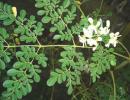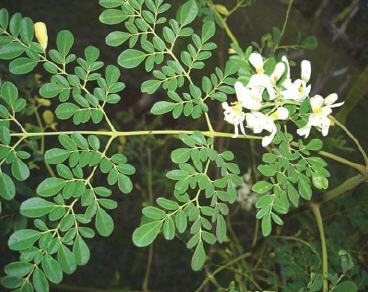
|
Plants with crop protection properties
|
Plants with crop protection properties
Very many wild and domesticated plants have plant protection properties in some measure. Some of them are part of the rich indigenous knowledge in some parts of Africa, but others are less commonly known. The following table gives an overview of the documented species from two sources (see below) and their properties for plant protection.
When making plant teas from these plants, please note that some have stronger effects than others and that botanicals are often difficult to dose exactly right, so you may not be getting the full benefit from any one plant tea preparation.
For more reliable plant protection please see our new list of registered biopesticides, some of which are much more effective than conventional spray chemicals. Also they are easy to dose correctly.
| Plant Name | Insecticidal | Insect repellant | Nematicidal | Fungicidal | Anti bacterial | Anti Viral |
| African Marigold | x | x | x | x | x | |
| Aloe | x | x | ||||
| Bersama Abyssinica | x | |||||
| Blackjack | x | x | ||||
| Cassava | x | |||||
| Castor oil | x | x | x | x | ||
| Catunaregam Spinosa | x | x | ||||
| Chili | x | x | ||||
| Chineese Lantern | x | x | ||||
| Cork Bush (Mundulea sericea) - Rotenone | Xxx Use Prohibited by some org certifiers | |||||
| Croton | X also kills snails and fish | |||||
| Custard apple | X incl grasshopper | |||||
| Datura | x | x | x | x | ||
| Eucalyptus | x | |||||
| Fat Hen (Chenopodium album) | x | |||||
| Feverfew (contains pyrethrin) | x | x | ||||
| Finger millet | x | x | ||||
| Garlic | x | x | x | x | x | |
| Goat weed (Ageratum conyzoides) | x | x | x | x | ||
| Jatropha | X (incl mollusks) | x | x | |||
| Lantana | x | x | ||||
| Leadwood | x | |||||
| Lion?s Ear (Leonotis nepetifolia) | x | |||||
| Lippia | x | x | ||||
| Marigold, Mexican | x | x | x | x | ||
| Monkey orange | x | |||||
| Moringa olifera | x | x | ||||
| Oleander Whole plant is poisonous | X (also rodents ) | x | x | |||
| Onion | x | x | midly | |||
| Papaya | x | x | x | |||
| Plectranthus barbatus | x | |||||
| Pyrethrum | x | x | ||||
| Rain tree (Rotenone) | X prohibited | |||||
| Red Mahogany | X also rats | |||||
| Red sunflower (tithonia rotundifolia) | x | |||||
| Resurrection bush | x | |||||
| Rhubarb | x | x | ||||
| Rubber hedge (Finger Euphorbia) | x | x | x | |||
| Snow berry | x | x | ||||
| Soyabean stems | x | |||||
| Stab grass, Andropogon spp | x | |||||
| Sugar apple Annona sp. | x | |||||
| Sunnhemp (Crotolaria) | x | x | ||||
| Sweet basil | x | x | midly | |||
| Sweet potato | aphids | x | ||||
| Syringa (Melia Azedarach) | x | x | x | x | ||
| Tea | x | |||||
| Tephrosia (rotenone) | Xxx (prohibited by some organic certifiers | x | ||||
| Tobacco | x | x | x | x | ||
| Tomato | x | |||||
| Wild basil | x | x | midly | |||
| Quassia amara | x | x | x |
There are other plants with medicinal and plant protection properties not listed and probably many not yet discovered.
Information Source Links
- Elwell. H. and Anita Maas1995: Natural Pest & Disease Control. Mambo Press, Gweru, Zimbabwe. ISBN: 0-7974-1429-0
- Stoll, G 1986: Natural Crop Protection in the Tropics. AGRECOL Margraf Publishers, Switzerland. ISBN: 3-8236-1113-5

 Back
Back
